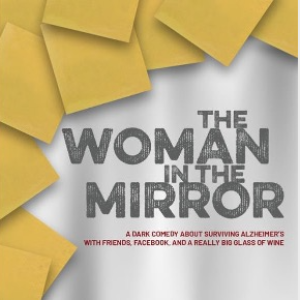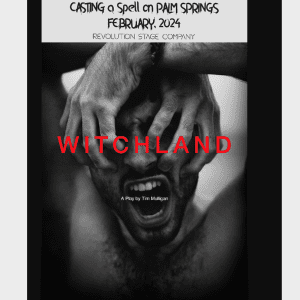 View Winners →
View Winners → 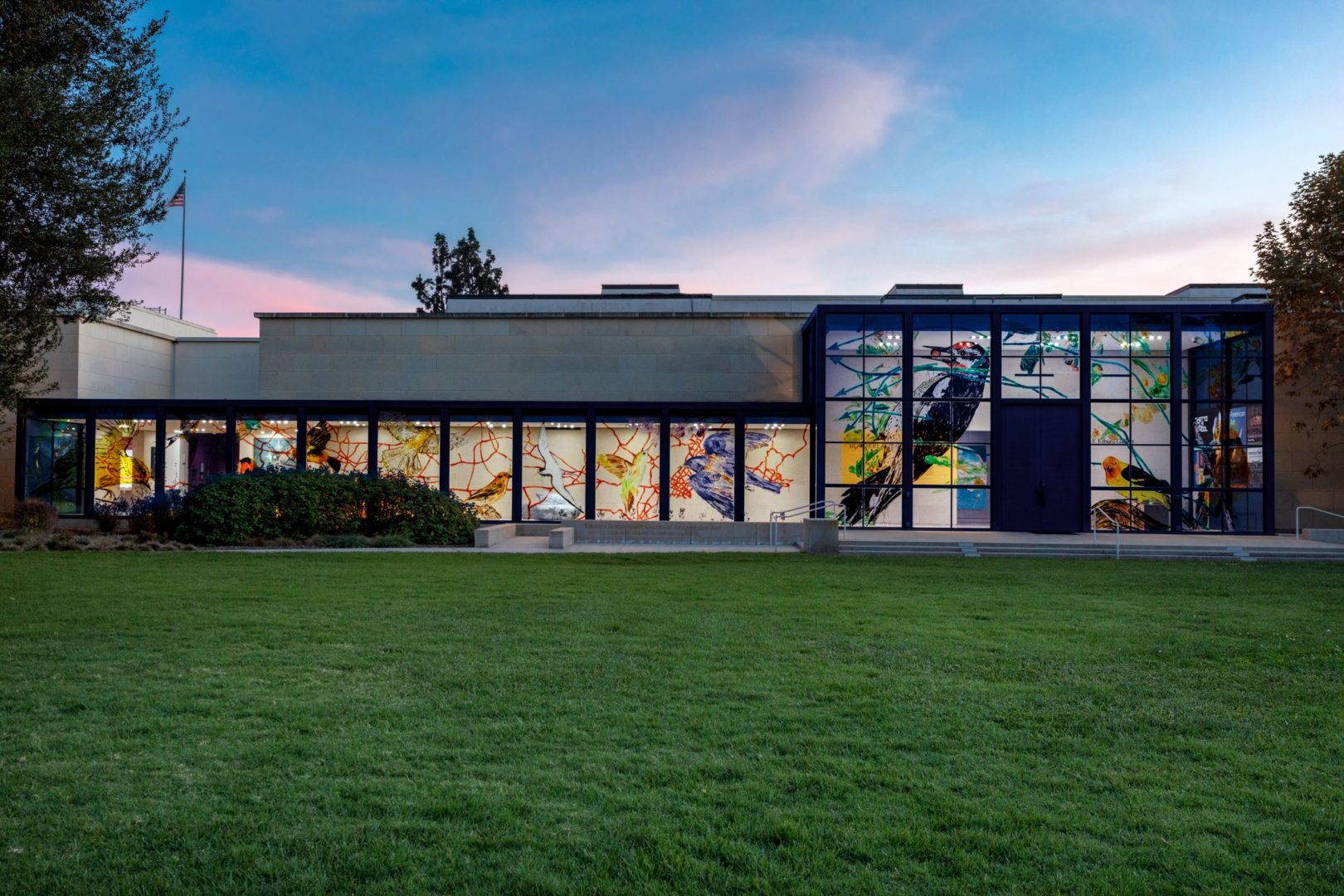
By May S. Ruiz
It has been a banner year for American Art acquisitions at The Huntington Library, Art Museum, and Botanical Gardens. Many of these new pieces will join other existing artwork at the Virginia Steele Scott Galleries in an ongoing permanent collection display called “Borderlands,” which opened on November 20.
Christina Nielsen, Hannah and Russell Kully Director at the Huntington, declares during the exhibition’s press preview, “Borderlands celebrates the importance of the beautiful and historic collection we have in a way that opens up the story and allows for new voices, new interpretations, and new ways of looking. What you see across the galleries is sometimes a trans-national conversation and sometimes a trans-historic conversation.”
“The Huntington has a responsibility to convey the relevance of historical collections to contemporary audiences and to consider our shared past from multiple perspectives, as we begin to create a vision for the future,” Nielsen said. “Borderlands addresses these goals by presenting a more expansive history of American art in a beautiful and thought-provoking installation – from the re-imagined entrance area through a freshly conceived group of galleries, where objects interact with one another in new ways, drawing connections across media, time, and cultures.”
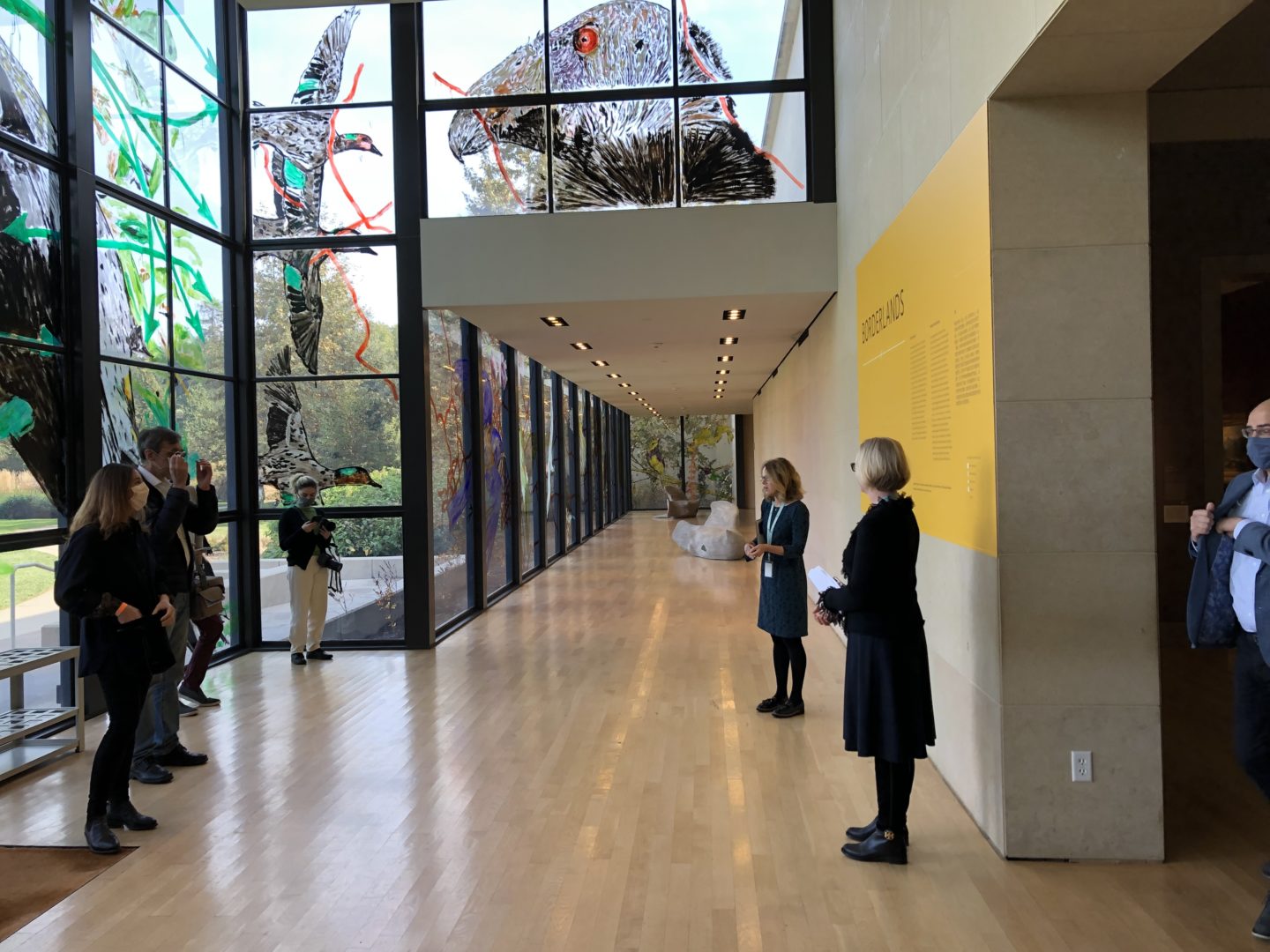
Two contemporary artists, Enrique Martinez Celaya, 2020-2022 Huntington Fellow in Visual Arts, and Sandy Rodriguez, 2020-2021 Caltech-Huntington Art + Research Fellow, along with strategic loans helped re-imagine the historical collection from multiple perspectives. Together they assembled the various pieces into four themed rooms – “Homelands,” “Crossing Borders,” “Americans Abroad,” and “Breaking Barriers.”
Spread out over about 5,000 square feet of gallery space, the exhibition is a reinstallation of portions of The Huntington’s American Art collection works of renowned artists Mary Cassatt, Frederic Edwin Church, Thomas Eakins, and Winslow Homer dating from the late 19th century to the early 20th century. New acquisitions include photographs by modern-day artists Mercedes Dorame and Cara Romero and a notable painting by Thomas Cole.
Dennis Carr, Virginia Steele Scott Chief Curator of American Art, explains, “We have organized these galleries under the theme of Borderlands, which looks at places where cultures came together historically, especially in the late 19th and early 20th centuries. To envision the arts in America in terms of the ‘borderlands’ metaphor, we looked at how artworks have registered the crossing of geographic, political, social, linguistic, and personal boundaries. The history of the United States has been shaped by innumerable borders, whose endurance or dissolution continues to impact us today.”
Martínez Celaya’s “There-bound” — depicting a variety of migratory birds flying across the building’s front windows — is painted inside the expansive glass façade of the Scott Galleries’ north entrance. It creates a stunning dialogue between the artworks inside the gallery with the famous landscapes and living collections at The Huntington. The glassed-in lobby and loggia radiate a chapel-like effect when the work is illuminated by sunlight. Custom-made seating he designed for the space encourages visitors to linger and take in the view of the garden and the San Gabriel Mountains beyond.
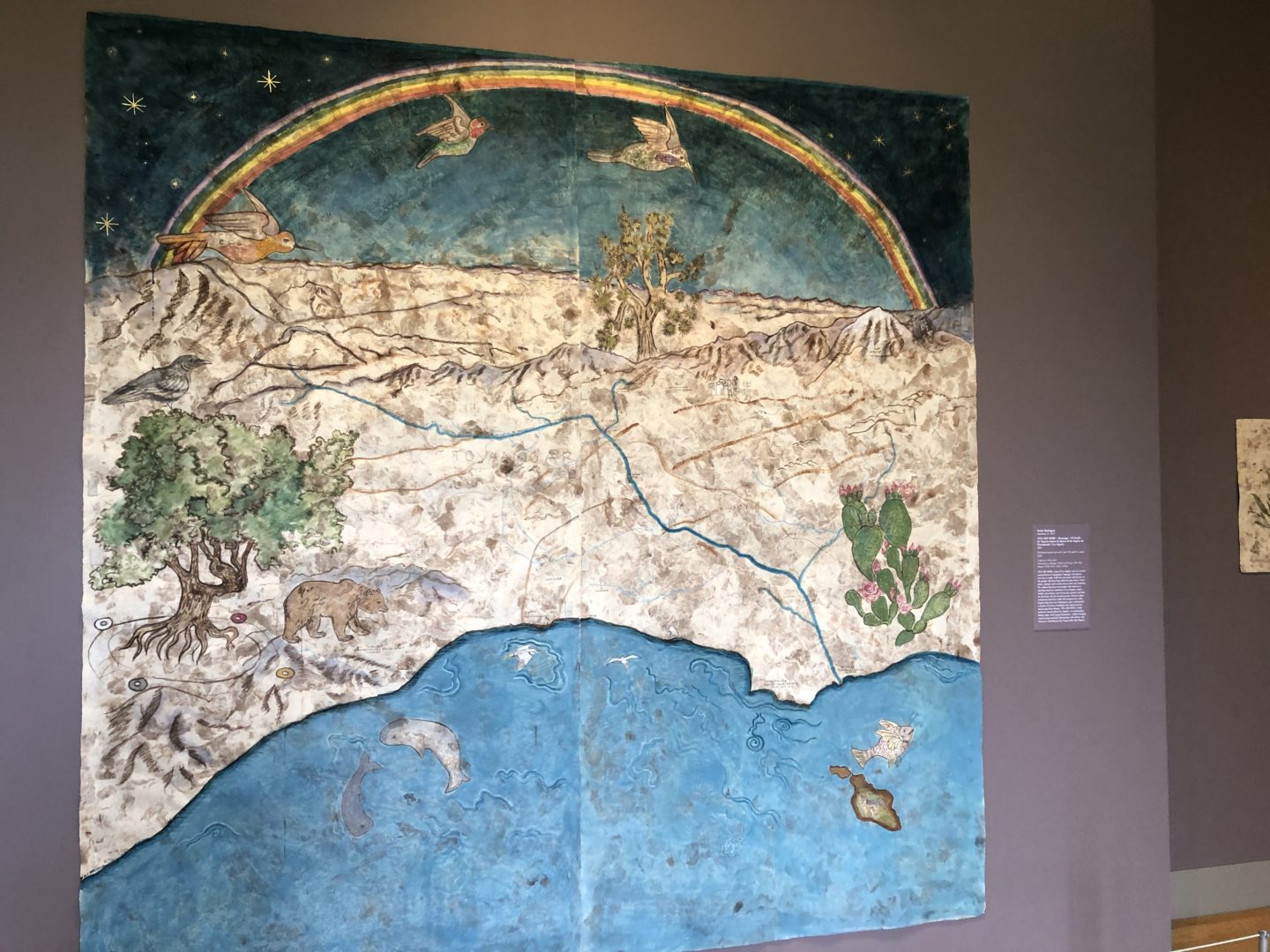
An 8-by-8-foot watercolor called “YOU ARE HERE” is the thematic anchor in the exhibition. Painted by Los Angeles-based artist Sandy Rodriguez, it is a multi-lingual map of the greater Los Angeles area, representing the topography, language, flora, fauna, and land stewardship in the region over time and illustrating the movement and histories of peoples who have called, and still call, the area home.
The first room in the installation, called “Homelands,” centers on Rodriguez’s work. Raised on the California-Mexico border, she investigates the methods and materials of painting across cultures, with particular focus on indigenous histories and knowledge. In addition to YOU ARE HERE, the room features her drawings of botanical species that yield pigments and medicinal treatments for respiratory illnesses or susto (trauma), reminders of the devastating effects of the pandemic.
A single accordion-fold book (a traditional Mexican book form) contains records of Rodriguez’s meticulous study of botanical specimens at The Huntington. Also debuting in this room is a newly acquired 1824 painting of Ioway Chief Moanahonga (Great Walker) by the artist Charles Bird King and photographs by Native American artists Mercedes Dorame and Cara Romero.
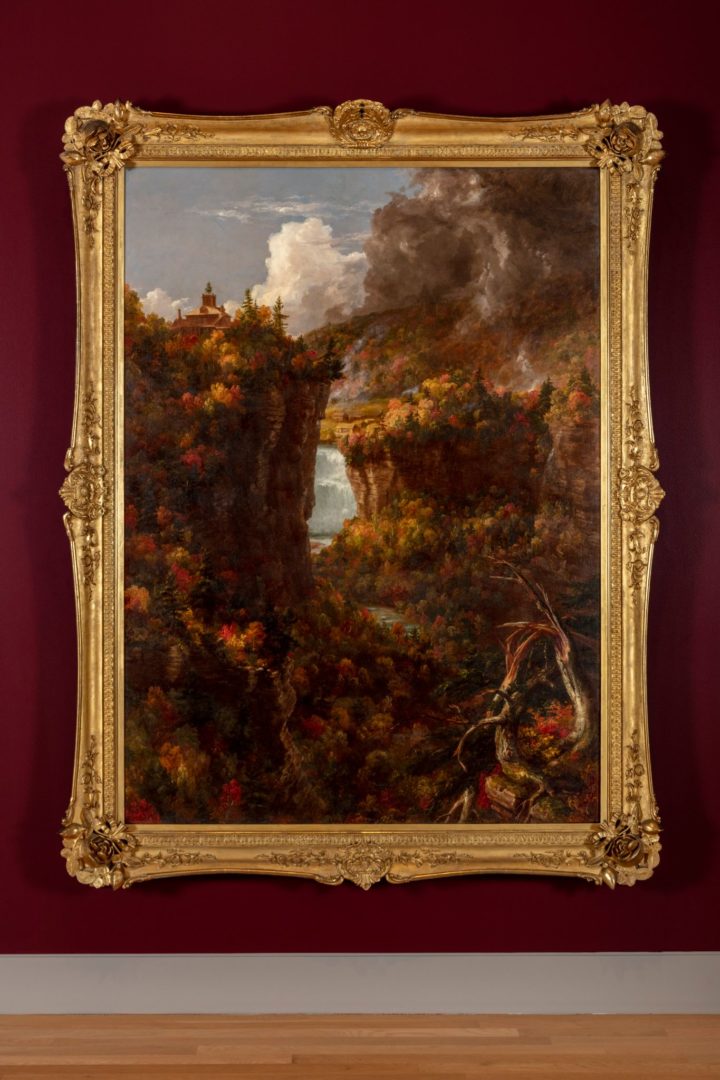
“Crossing Borders,” the second gallery in the exhibition, examines the relationship between landscape and American expansion and exploration in the 19th century with paintings by Albert Bierstadt, Frederic Edwin Church, Martin Johnson Heade, and Thomas Moran. Many of the featured artists crossed borders, depicting the farthest reaches of the American continent.
Additionally, this room looks at how artists often erased Indigenous presence, picturing a landscape devoid of human occupation and ready for economic exploitation.
“This colonialist view embodied a land-centered conception of nationhood, at a time when landscapes were becoming profoundly altered by rising development and industrialization,” Carr describes. Here, the recently acquired, Thomas Cole’s “Portage Falls on the Genesee” (ca. 1839) makes its first appearance at the Huntington. This majestic 7-by-5-foot painting captures the epic scale and Romanticism that define the Hudson River School, an artistic movement that Cole presumably founded.
As the name suggests, “Americans Abroad,” the next room in the exhibition, features American artists working abroad. In the late 19th and early 20th centuries, unprecedented numbers of American artists traveled abroad to connect with Europe’s history and its flourishing modern art scene. Some found greater freedom from the strictures of race, sexuality, gender, and class than they did at home. Artists were especially inspired by Impressionism, the Aesthetic Movement, and Art Nouveau, represented in this gallery by the works of Cecilia Beaux, Mary Cassatt, Thomas Eakins, Childe Hassam, John Singer Sargent, Lockwood de Forest, and Louis Comfort Tiffany, among others. Many artists also adopted non-Western, Asian and Middle Eastern forms and motifs. The newly acquired painting “Bank of the Nile Opposite Cairo, Egypt” (1879–86) by Lockwood de Forest is on view here.
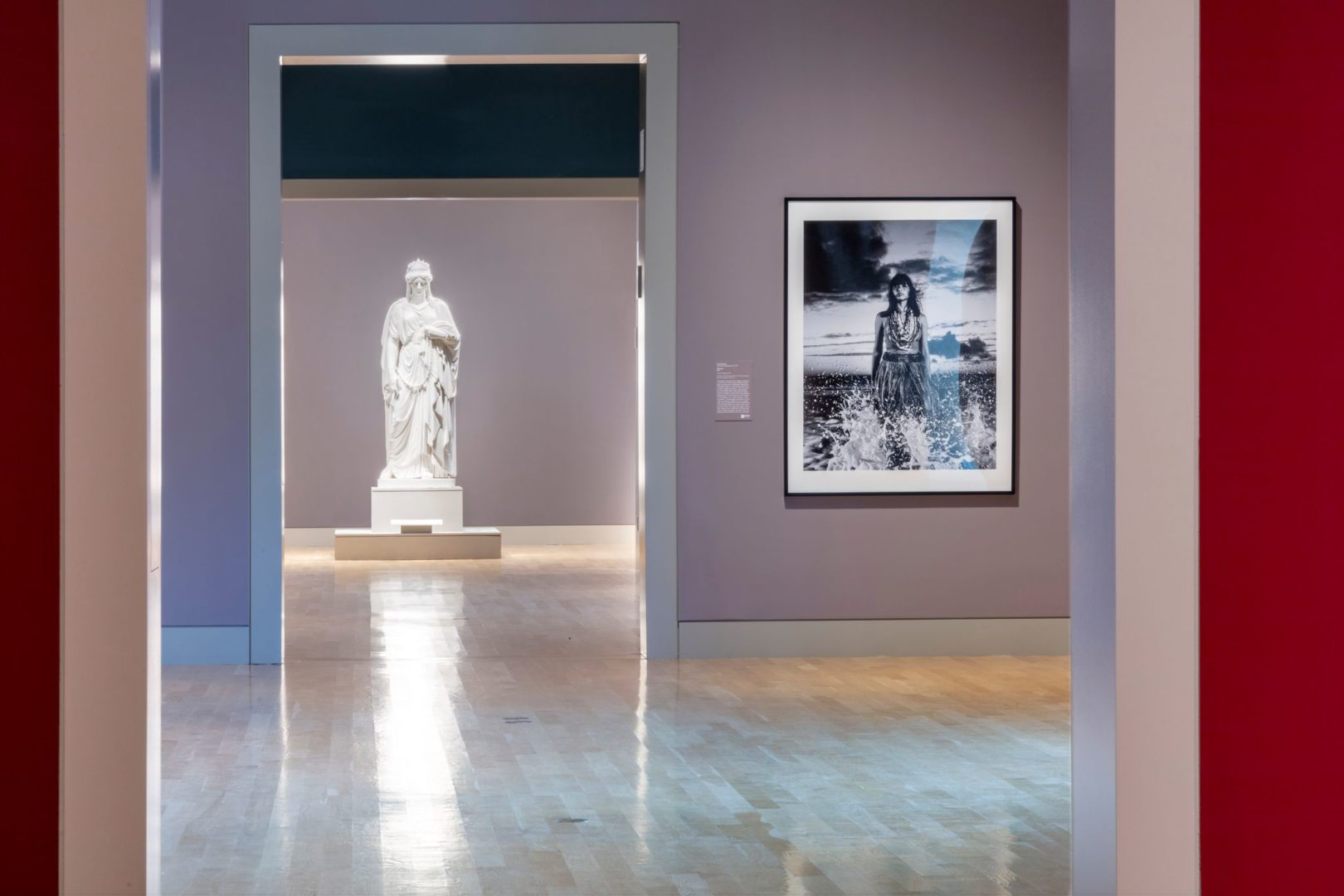
In “Breaking Barriers,” “Zenobia in Chains,” Harriet Goodhue Hosmer’s monumental marble sculpture, shares the space with Henry Ossawa Tanner’s painting “Daniel in the Lions’ Den,” which is on loan from the Los Angeles County Museum of Art. “These works each speak to the idea of breaking down barriers,” says Carr.
Hosmer’s life, like that of the ancient queen she sculpted, was defined by rebellion. In her 20s, Hosmer moved to Rome to become a professional sculptor, finding support from a circle of creative expatriate women who broke 19th century social expectations by living alone, pursuing artistic careers, and, as was the case for Hosmer, being open about their queer identity. Hosmer became one of the most successful American sculptors — male or female — of her era. Nevertheless, when Zenobia was exhibited in the 1862 Great London Exposition, some male critics wrote that a woman could not possess the skill nor strength to execute such a significant work.
Tanner’s painting in this section highlights the work of artists of color in the 19th century. An African American artist born in Pittsburgh, he gained international acclaim for his paintings, including those with religious themes like Daniel in the Lions’ Den. That he chose to depict Daniel — a biblical character unjustly condemned to death — can also symbolize the systemic persecution of Black Americans, both in his time and ours.
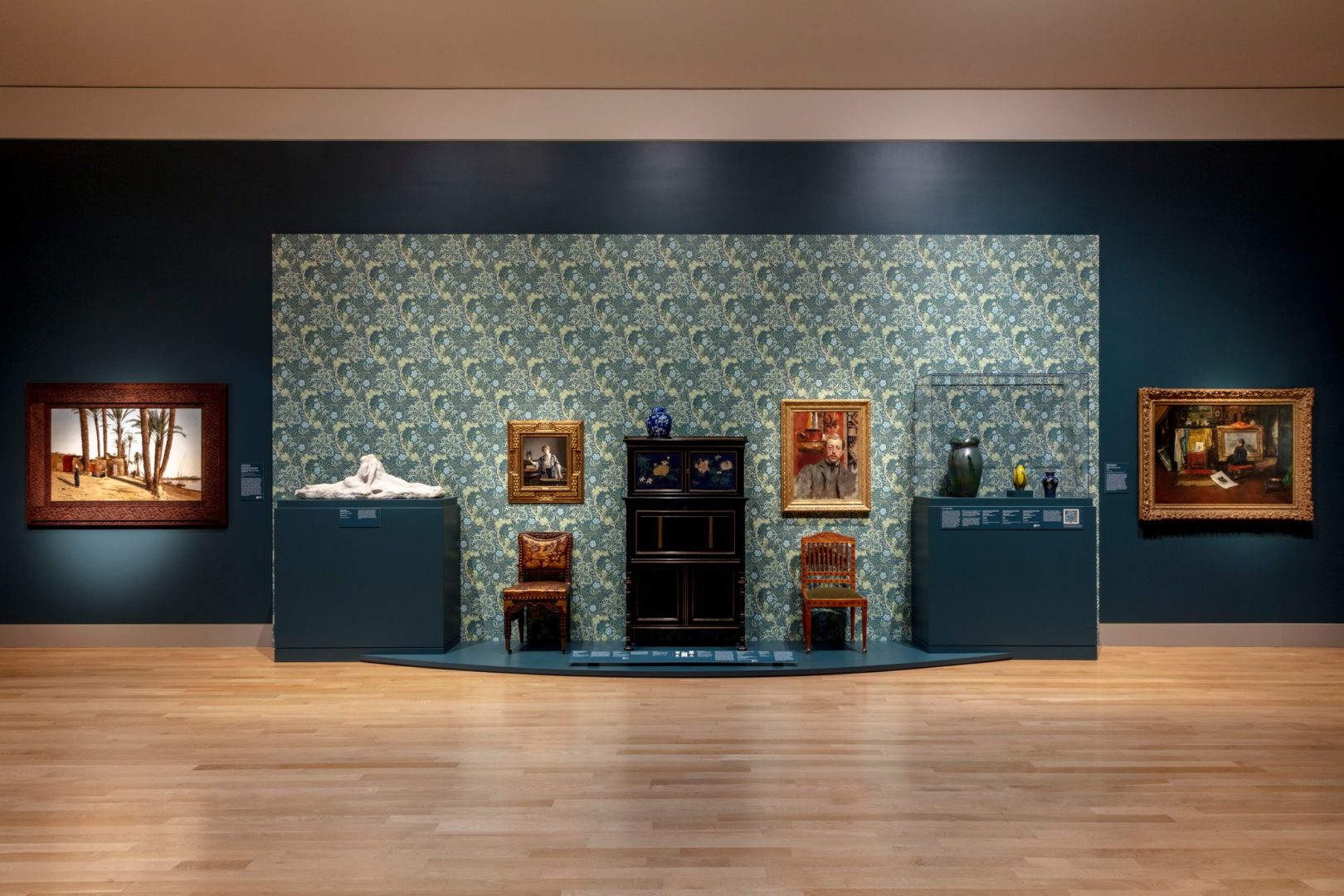
At the end of the exhibition, visitors reach a loggia where Martinez Celaya’s handmade bench beckons. He speaks about his project for The Huntington and describes the painting on the glass façade. He also graciously agrees to a short interview for Beacon Media to talk about his background and his work.
Martinez Celaya discloses that he was originally from Cuba and was raised in Puerto Rico. He started out as an artist when he was younger, before becoming a physicist, only to go back to his first love — art. He came to the United States for college and graduate school.
“First, they acquired my sculpture outside — which was also the first time they acquired from a contemporary artist — and that’s how I got to know them,” he relates how his partnership with The Huntington came about. “They then asked me to be their first Visual Arts Fellow; this is almost the end of two years’ collaboration.”
Martinez Celaya’s painting for the “Borderlands” exhibition combines his interests in literature and philosophy. He expounds, “I’m particularly drawn to T.S. Eliot’s ‘Four Quartets’ because of their circularity; the idea that in every end is a new beginning and every beginning has an ending. This seems quite fitting to the concept of migration and movement – the moment you leave the place you come from, you’re beginning elsewhere. That circularity of time is the theme of this work.”
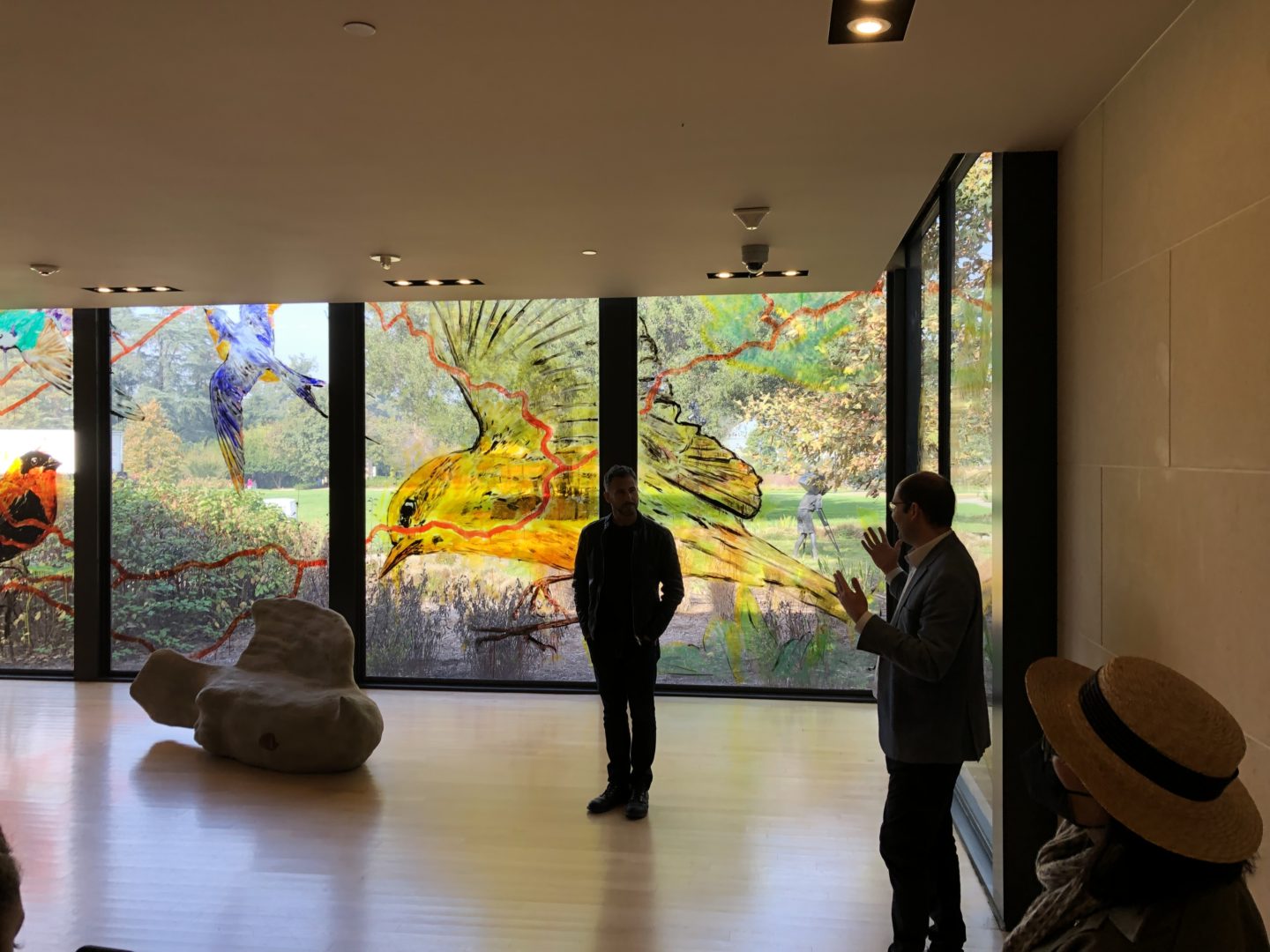
“Birds are the metaphor for people’s migration, exile, shift – different cultures, languages, and histories moving through the landscape and time,” he continues. “I’m fascinated by what that means — the dislocation and reinvention that come with that. This theme is fitting in California, especially Los Angeles, a place that brings in people from all over the world who came here for many different reasons. L.A. is a city of immigrants, much more than maybe London is. I’m interested in how migration is representative of a certain condition of being in California. That’s why I used California freeways as part of the design, it’s not only the movement of people, but this state has always been the point of intersection for all this movement.”
As for his last project as a Visual Arts Fellow, Martinez Celaya reveals, “I’m thinking of doing the art of exile for the lecture because I’m an exile, and exploring that as an act of reinvention — of leaving something behind and creating something new. I came here to flee the political situation in Cuba. And while the border is now open, I can never go back. You really can never go back once you leave. I came here when I was 21 so I’ve been for a long time. I do exhibitions around the world but I’m now an American. I’m more Californian than anything else.”
Carr hinted during the press preview that Martinez Celaya’s “There-Bound” painting may become a permanent part of the gallery’s collection of American Art. The peripatetic birds he painted — much like him — may have found their home.











































































































